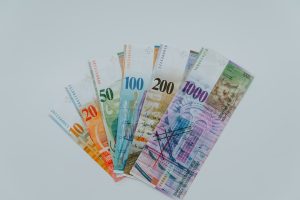Forex trading, also known as foreign exchange trading, is a popular form of investment where traders buy and sell currencies in the hopes of making a profit. But how exactly do forex traders make money? In this article, we’ll explore the various ways that traders can earn profits in the forex market.
First, it’s important to understand the basics of forex trading. In forex trading, traders buy and sell currency pairs, such as the EUR/USD or USD/JPY. The value of a currency pair is determined by the exchange rate between the two currencies. For example, if the EUR/USD exchange rate is 1.1500, it means that one euro is worth 1.1500 US dollars.
Forex traders make money by buying a currency pair at a low price and selling it at a higher price. For example, let’s say a trader buys the EUR/USD currency pair at 1.1500 and sells it at 1.1600. The trader has made a profit of 100 pips (or points), which is the difference between the buying and selling price.
There are several ways that forex traders can make money:
1. Capital appreciation
When a forex trader buys a currency pair, they are essentially buying one currency and selling another. If the currency they are buying appreciates in value, the trader will make a profit when they sell it. For example, if a trader buys the EUR/USD currency pair at 1.1500 and the exchange rate later rises to 1.1600, the trader will make a profit of 100 pips when they sell the currency pair.
2. Carry trade
A carry trade is a strategy where traders borrow money in a low-yielding currency and invest it in a high-yielding currency. The profit comes from the difference in interest rates between the two currencies. For example, if a trader borrows money in Japanese yen (which has a low interest rate) and invests it in Australian dollars (which has a high interest rate), the trader will earn a profit from the interest rate differential.
3. Scalping
Scalping is a short-term trading strategy where traders aim to make small profits from multiple trades throughout the day. Traders who use this strategy typically hold positions for only a few minutes and aim to make a profit from the bid-ask spread (the difference between the buying and selling price of a currency pair).
4. Swing trading
Swing trading is a medium-term trading strategy where traders aim to capture larger price movements over a period of several days or weeks. Traders who use this strategy typically hold positions for several days or weeks and aim to make a profit from the price movement of the currency pair.
5. Position trading
Position trading is a long-term trading strategy where traders aim to capture larger price movements over a period of several months or even years. Traders who use this strategy typically hold positions for several months or years and aim to make a profit from the overall trend of the currency pair.
In addition to these strategies, forex traders can also use technical analysis and fundamental analysis to make trading decisions. Technical analysis involves using charts and technical indicators to identify trends and potential trading opportunities. Fundamental analysis involves analyzing economic and political factors that may affect the value of a currency pair.
It’s important to note that forex trading involves a high level of risk and traders should only risk money that they can afford to lose. Traders should also have a solid understanding of the forex market and the various trading strategies before investing their money.
In conclusion, forex traders make money by buying and selling currency pairs at a profit. There are several ways to make money in the forex market, including capital appreciation, carry trades, scalping, swing trading, and position trading. Traders can also use technical analysis and fundamental analysis to make trading decisions. However, forex trading involves a high level of risk and traders should only risk money that they can afford to lose.






